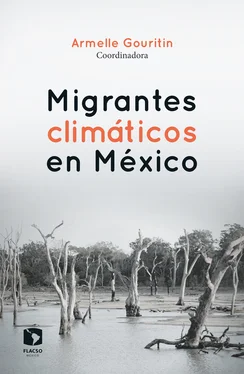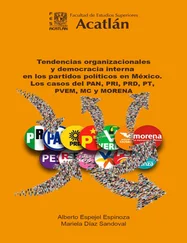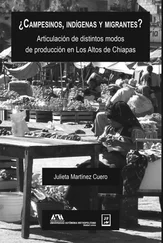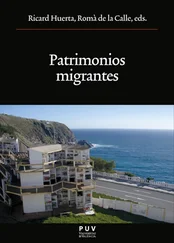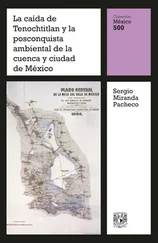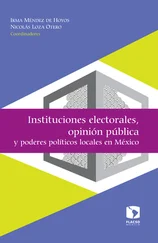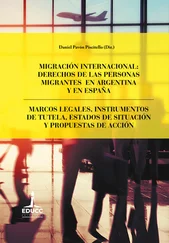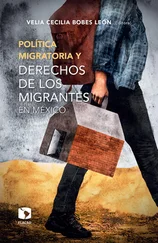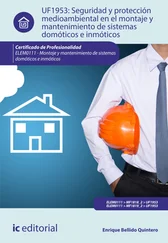Manrique, D. R., Corral, S. y Pereira, Â. G. (2018). Climate-related displacements of coastal communities in the Arctic: Engaging traditional knowledge in adaptation strategies and policies. Environmental Science & Policy , 85 , 90-100.
Mascia, R. (2020). Complications of the climate change narrative within the lives of climate refugees. Consilience , (22), 31-38.
Mayer, B. (2018). Definitions and concepts. En R. McLeman y F. Gemenne (Eds.), Routledge handbook of environmental displacement and migration (pp. 323-328). Londres: Routledge/GSE Research.
Mayer, B. (2012). Sustainable development law on environmental migration: the story of an obelisk, a bag of marbles, and a tapestry. Environmental Law Review , 14 (2), 111-133.
Mayrhofer, M. (2020). Victims, security threats or agents? Framing climate change-related mobility in international human rights documents. International Journal of Law, Language & Discourse , 8 (2), 9-33.
McAdam, J. (2015). Relocation and resettlement from colonisation to climate change: the perennial solution to ‘danger zones’. London Review of International Law , 3 (1), 93-130.
McAdam, J. (2012). Climate change, forced migration, and international law . Oxford: Oxford University Press.
McGranahan, G., Balk, D. y Anderson, B. (2007). The rising tide: assessing the risks of climate change and human settlements in low elevation coastal zones. Environment and Urbanization , 19 (1), 17-37.
McGregor, J. (1993). Refugees and the environment. En R. Black y V. Robinson (Eds.), Geography and refugees: Patterns and processes of change (pp. 157-170). Londres: Belhaven Press.
Merrill, J. (2013). Climate change and its effect on indigenous peoples of the southwest. American Indian Law Review , 38 , 225-259.
Mooney, E. (2003). Bringing the end into sight for internally displaced persons. Forced Migration Review , 17 , 4-7.
Mora, F. (2019). The use of ecological integrity indicators within the natural capital index framework: The ecological and economic value of the remnant natural capital of México. Journal for Nature Conservation , 47 , 77-92.
Morales Sánchez, J. (2019). Migración irregular y Derechos Humanos . México: Tirant Lo Blanch.
Moussalli, M. (1992). Handbook on Procedures and Criteria for Determining Refugee Status under the 1951 Convention and the 1967 Protocol Relating to the Status of Refugees . Ginebra: Office of the United Nations High Commissioner for Refugees.
Mundt, A. y Ferris, E. (2008). Durable solutions for IDPs in protracted situations: Three case studies . Washington. The Brookings Institution.
Naciones Unidas (NU). (1998). Principios Rectores De Los Desplazamientos Internos. (UN doc.E/CN.4/1998/53/Add.2, 11 de febrero de 1998). Oficina de Coordinación de Asuntos Humanitarios de las Naciones Unidas. https://cutt.ly/mbDphje
Nash, S. L. (2020). Disrupting the knowledge-power politics of human mobility in the context of climate change. Questioning established categories. En J. Scheffran, M. Brzoska, H. G. Brauch, P. M.Link y J. Schilling (Eds.), Climate change, security risks, and violent conflicts (pp.195-207). Hamburgo: Hamburg University Press.
Nawrotzki, R. J., Riosmena, F., Hunter, L. M. y Runfola, D. M. (2015). Amplification or suppression: Social networks and the climate change-migration association in rural Mexico. Global Environmental Change , 35 , 463-474.
Niemi, S. (2020). Mobility and immobility in climate migration in the Pacific Islands. Siirtolaisuus-Migration , 46 (3), 13-16.
Ogra, M. V. y Badola, R. (2014). Gender and climate change in the Indian Hindu-Kush Himalayas: global threats, local vulnerabilities. E arth System Dynamics Discussions , 5 (2), 1491-1520.
Okeowo, D. (2013). Examining the link: Climate change. Environmental Law Review , 15 (4), 273-289.
Onwutuebe, C. J. (2019). Patriarchy and women vulnerability to adverse climate change in Nigeria. Sage Open , 9 (1), 1-7.
Organización de los Estados Americanos (oea). (1969). Convención Americana sobre Derechos Humanos. “Pacto de San José Costa Rica” . Adoptada el 22 de noviembre de 1969. https://www.refworld.org.es/docid/57f767ff14.html
Oswald Spring, Ú. (2008). Gender and disasters: Human, gender and environmental security: A HUGE Challenge . Studies of the University: Research, Counsel, Education No. 8/2008, United Nations University, Institute for Environment and Human Security, Bonn, Germany.
Ottonelli, V. y Torresi, T. (2013). When is migration voluntary? I nternational Migration Review , 47 (4), 783-813.
Parsons, L. (2018). Structuring the emotional landscape of climate change migration: Towards climate mobilities in geography. Progress in Human Geography , 43 (4), 1-21. https://doi.org/10.1177%2F0309132518781011
Piguet, E. (2013). From “primitive migration” to “climate refugees”: The curious fate of the natural environment in migration studies. Annals of the Association of American Geographers , 103 (1), 148-162.
Piguet, E., Pécoud, A. y De Guchteneire, P. (2011). Migration and climate change: An overview. Refugee Survey Quarterly , 30 (3), 1-23.
Raleigh, C., Jordan, L. y Salehyan, I. (2008). Assessing the impact of climate change on migration and conflict . Paper commissioned by the World Bank Group for the Social Dimensions of Climate Change workshop, Washington, D. C.
Ramírez, E. (2012). Presas e hidroeléctricas: negocio y despojo. Contralínea . https://cutt.ly/cbDpxdk
Rathod, J. (2020). Legal protections for environmental migrants: Expanding possibilities and redefining success . (CLAS Working Paper Series No. 29). Center for Latin American and Latino Studies, American University, Washington.
Reid, J. (2020). Constructing human versus Non-Human climate migration in the Anthropocene: The case of migrating polar bears in Nunavut, Canada. Anthropocenes-Human, Inhuman, Posthuman , 1 (1).
Renaud, F. G., Dun, O., Warner, K. y Bogardi, J. (2011). A decision framework for environmentally induced migration. International Migration , 49 , e5-e29.
Renaud, F. G., Bogardi, J. J., Dun, O. y Warner, K. (2007). Control, adapt or flee: How to face environmental migration? (UNU-EHS InterSecTions Serie, no. 5). Bonn: UNU/EHS.
Reuveny, R. (2005). Environmental change, migration and conflict: theoretical analysis and empirical explorations . Documento presentado en el Human Security and Climate Change: An International Workshop, 21-23 de junio, Oslo.
Reuveny, R. y Moore, W. H. (2009). Does environmental degradation influence migration? Emigration to developed countries in the late 1980s and 1990s. Social Science Quarterly , 90 (3), 461-479.
Rigaud, K. K., De Sherbinin, A., Jones, B., Bergmann, J., Clement, V., Ober, K., Schewe, J., Adamo, S., McCusker, Brent., Heuser, S. y Midgley, A. (2018). Groundswell: Preparing for internal climate migration . Washington D. C.: World Bank.
Rojas Hernández, J. (2016). Society, environment, vulnerability, and climate change in Latin America: Challenges of the twenty-first century. Latin American Perspectives , 43 (4), 29-42.
Rubio Díaz-Leal, L. (2017). Desplazamiento ambiental. Experiencia global, realidad mexicana . Comisión Mexicana de Defensa y Promoción de los Derechos Humanos/Heinrich Böll Stiftung México, Centroamérica y el Caribe. https://cutt.ly/nbDpb28
Читать дальше
